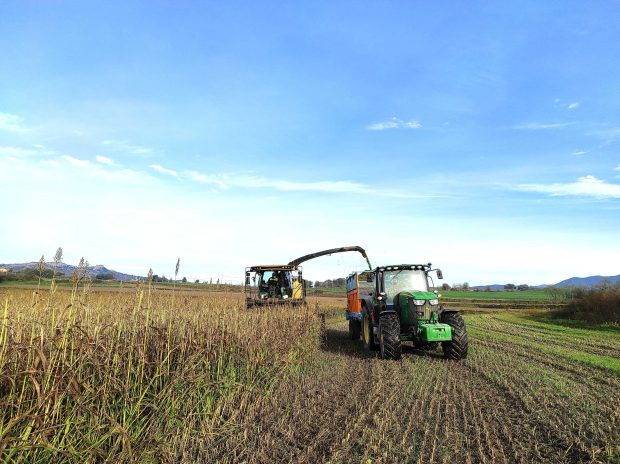Fertilization with 170 kg of nitrogen per hectare per year is the most appropriate to ensure the harvest in the double annual crop fields of Osona

Currently, most municipalities in the Osona region are designated as vulnerable areas for nitrate pollution from agricultural sources. To reverse the impact that excess nutrients have on groundwater, Decree 153/2019 establishes that in Osona, the limit of 170 kg of nitrogen per hectare per year from organic fertilizers cannot be exceeded. But is this regulatory amount adequate? A comprehensive study, conducted over 18 years (2006-2024) in Osona and led by Carme Casas, a researcher at the BETA Technological Centre of the University of Vic – Central University of Catalonia ( UVic -UCC), affirms that this is the most advisable fertilization to ensure good crop yields in double-cropped fields on land that depends solely on rainwater.
“This trial responds to the agricultural sector’s need for information on the actual nutrient requirements of crops in double-cropping systems under rainfed conditions. We also took into account that, in the area studied, water availability determined the viability of the second crop, the summer cereal crop,” the researcher explains. She adds, “We also sought to determine the optimal fertilization strategy in these systems that would balance economic profitability with the environmental effects that excess nutrients in the soil can cause.”
Performance and sustainability
This study, conducted by CT BETA in collaboration with the Department of Agriculture, Livestock, Fisheries, and Food (DARPA) of the Government of Catalonia, has shown that, considering the climatic conditions and soil characteristics of the Vic plain, fertilization with 170 kg N/ ha per year appears to be the most appropriate. This dose helps reduce nitrate leaching, which has been of primary importance in regulating fertilizer standards and managing livestock manure in recent decades. It also helps minimize phosphorus accumulation, another concern in agricultural sustainability, along with potassium content, heavy metals, and organic matter in the soil.
The study evaluated how continuous fertilization with pig slurry affected these parameters and soil quality. It details that fertilizations were carried out with different doses of nitrogen, and it was observed that organic fertilization based solely on nitrogen can cause phosphorus and potassium imbalances in the soil. That is, with low doses of nitrogen, there is a small manageable surplus of phosphorus and a decrease in potassium, while with high doses of nitrogen, excessive phosphorus accumulates in the topsoil. For this reason, it is recommended not to exceed 170 kg N/ ha, to know the nitrogen/phosphorus ratio of fertilizers, and to conduct periodic analyses (every 5 years) of the phosphorus and potassium content in the soil to maintain them within optimal levels. It is also important to supplement with mineral fertilizers when necessary to meet crop needs without generating excesses or deficits.
Specific results
The recommendation of 170 kg N/ ha /year is not valid in the most severe drought years, which are common in the context of current climate change, as this dosage should be reduced under these conditions. During drought, plant yield and therefore the absorption of nutrients, such as nitrogen and phosphorus, decrease, leading to the accumulation of these elements in the soil. This conclusion would not be applicable to areas that, due to soil characteristics or physiographic position, have greater water availability during the summer.
The trial also highlights that production increases significantly with nitrogen fertilization with slurry in winter crops during most of the years evaluated, both in triticale (a cereal derived from a cross between wheat and rye) and barley. In summer crops, however, corn and sorghum, no significant differences in production were observed. For this reason, it is recommended that most of the nitrogen be applied as top dressing for winter cereal crops (once the crop has emerged).
Studies like these, which have lasted nearly two decades, are rare and invaluable because they provide sufficient data to draw solid conclusions about the effects of continued use of organic fertilizers, such as pig slurry, on soil quality.
A guide to fertilization
The results of this long-term experimental trial—almost two decades long—on pig slurry fertilization in annual double cropping systems have just been published in the jointly prepared technical document “ Fertilization strategies in double cropping systems under rainfed conditions in La Plana de Vic ( Osona ) .” This guide, which includes a summary of the trial results, conclusions, and specific fertilization recommendations, is a highly useful resource for determining the optimal fertilization strategy that combines economic profitability and environmental sustainability.
